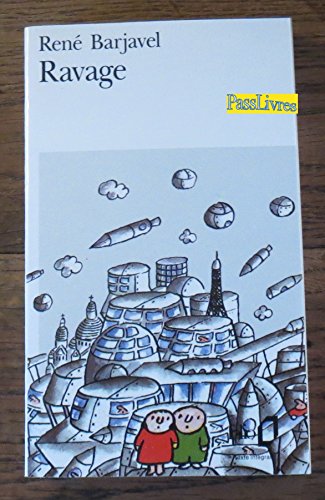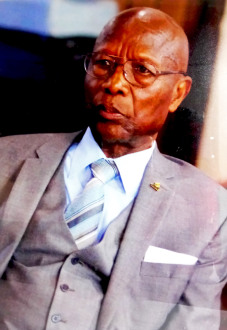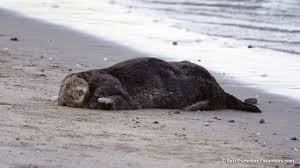Mark Bowden
Huế 1968: A Turning Point in the American War for Vietnam
Hardcover, Grove Atlantic, 2017 (37.95 NZD)

Mark Bowden, Hue 1968, Grove-Atlantic Press, 2017
In the early hours of 31 January 1968, the first day of Tet, Vietnam’s national holiday to mark the lunar New Year, PAVN and Vietcong soldiers launched a coordinated assault on the city of Huế. For days, National Liberation Front forces had been massing nearby while operatives infiltrated the civilian population in preparation for the surprise attack.
This strike was one of more than a hundred launched on cities and towns inside South Vietnam as part of a synchronised action known to Vietnamese as the General Offensive and Uprising and to westerners as the Tet Offensive. While shocking and often deadly, most of these attacks were repulsed quickly and failed to engender the popular uprising their advocates expected would tip the conflict irrevocably in the favour of the Hanoi government.
Huế differed crucially from the other Tet assaults on several counts. For a start, the target was no ordinary base or village, but the graceful second city of Vietnam, seat of its Nguyen Dynasty and the national capital from 1802 to 1945. Carried out by relatively small deployments, the attacks elsewhere presented shocks rather than existential threats to allied positions. Their greatest impacts were on morale and international perception. By contrast, an unprecedentedly large occupying force of roughly 10,000 rapidly overwhelmed the scantily defended Huế —a city of 140,000 largely unaffected by the war to date and considered far less likely to be attacked than the American base to the north at Khe Sahn. By 8am, a National Liberation Front flag flew brazenly atop the tower of Huế’s imposing citadel. While a popular uprising also failed to materialise amongst its urbane, largely neutral citizenry, the symbolic victory for the National Liberation Front was enormous.
This seizure of Huế and the ensuing bloody thirteen-day struggle by American and South Vietnamese troops to regain control of the city is the subject of Mark Bowden’s new book Huế 1968: A Turning Point of the American War in Vietnam. Bowden is a veteran journalist who spent many years at the Philadelphia Inquirer and has written a series of acclaimed and best-selling works of narrative non-fiction. Best regarded amongst these releases is Black Hawk Down (1999), an account of the disastrous 1993 US intervention in Somalia resulting in the Battle of Mogadishu, turned a few years later into a gripping Cinéma vérité-style feature film. Bowden also wrote Killing Pablo, the inspiration for Netflix’s dramatically inert retro drug-trafficking series Narcos. My favourite of Bowden’s books is perhaps his least substantial, Finders Keepers (2002), an urban parable about a Philadelphia ne’er-do-well whose life dramatically unravels after discovering a million dollars in cash dropped by an armoured truck in 1981.
In tone and subject, Bowden’s new work clearly sits alongside Black Hawk Down. That book offered a grim picture of what can happen when the antiseptic, air-power-dominated operating plans of the modern military break down. Huế 1968 demonstrates to an even greater degree the primal horror (as well as the unthinkable courage) endemic to sustained close-quarter combat. Its 500 or so pages consist in large part of an hour-by-hour, street-by-street account of relentless, terrifying, grinding urban warfare as large, closely proximate forces square-off for control of Huế. On one side of the battle were 3 battalions of the US Marine Corps, 4 US Army battalions and 11 ARVN (Army of the Republic of South Vietnam) battalions, on the other 10 National Liberation Front battalions. The conflagration quickly levelled the beautiful city and caused the deaths of thousands of troops and civilians. Such intense, intimate conflict was a rarity at that point in Vietnam and not had been experienced by American troops since Seoul in 1950.
It’s a testament to Bowden’s powers of pacing and description that the rhythms of battle, painstakingly recounted, never lose their ability to fascinate and shock. One of his narrative’s key accomplishments is the sheer number of individuals—both Vietnamese and American—whose perspectives, gleaned from over a hundred interviews, are woven into the story. This dramatis personae includes lowly teenage infantry soldiers (‘grunts’), their crafty, beleaguered commanding officers, earnest socialist revolutionaries, terrified city dwellers, journalists and political operatives. The breadth of Bowden’s informants is an asset, providing a panorama of the battle, although it means he is only able to furnish minimal detail about each person. Few characters are subsequently fully fleshed out individuals in whose fate the reader is deeply invested. In some ways, this broad scope makes sense—many of the soldiers in particular were young and unformed, with relatively few prior experiences for excavation, while excessive focus on back story would have distracted from the main action on the battlefield.
Nonetheless, a few individuals burn themselves onto the reader’s memory. Particularly vivid are Alfredo Cantu “Freddy” Gonzales, a young Chicano soldier from Texas whose composure under fire is staggering; Jim Coolican, a resourceful officer assigned to an elite unit of the unfairly maligned ARVN, swaggering Marine field commander Ernie Cheatham, Nguyen Dac Xuan, a buddhist poet-turned-zealot and Front enforcer and Steve ‘Storyteller’ Bernston, a Marine corps PR-journalist doing double duty as a frontline soldier. Bowden must also be commended for the incorporation of information from Vietnamese civilians and former Liberation Front members, having spent time in the country working with fixers and interpreters to gain their stories. If the Vietnamese characterisations are in general shallower than those of US military personnel, its understandable given lingering political sensitivities of researching the war there. This trickiness probably accounts for fewer former ARVN personnel, long marginalised within Socialist Republic of Vietnam, appearing as informants.
A lack of political and strategic context is another aspect of the book that seems both a strength and a weakness. Bowden’s tight focus on the battle means the life and death momentum rarely dips and he commendably avoids editorialising and digression. His single-minded attention to detail, however, allows for very little analysis of the circumstances and evolution of the conflict itself or of wider operational strategy, save for somewhat repetitive criticisms of General William Westmoreland and President Lyndon Johnson. While I am far from a military historian, the absence of a strong overview appears to account for some distortions, in particular overstated claims Bowden makes for the overall importance of the Battle of Huế as a single event in what was extremely complex, long-running and varied war. Any historian who has employed case studies understands the pressure to ascribe particular external significance to discreet events they are concentrating on for purposes of narrative compression. While horrific, Huế is correctly not widely regarded as a pivotal battle in the de-centred, sprawling conflict and Bowden’s book, contrary to his assertions, will likely fail to change its status among those with strong knowledge of the war.
When analysis finally does appear, in the form of a ponderous epilogue, it feels shallow and unearned. We receive little more than the orthodox liberal repudiation of the geo-politics of the war and rote hand-wringing over its mismanagement. Short shrift is given to the sincere, if possibly incorrect, belief of some veterans that victory was eminently possible, as well as their touching bitterness regarding the loss of domestic political nerve which resulted in ultimate abandonment of erstwhile South Vietnamese allies to a vengeful police state. What’s more absorbing is a truncated run of pages at the end dealing with societal re-integration and the long-term impacts of the war on some of the many individuals mentioned in the book. The life-trajectories Bowdon is able to follow-up are fascinating and sometimes sad and deserve further elaboration, although would warrant another book altogether.
While flawed in the respects mentioned, Huế 1968’s few shortcomings are outweighed by the vivid, once-in-a-generation depiction of war it provides. The book isn’t for the faint hearted, but I couldn’t recommend it highly enough.
Share this:




